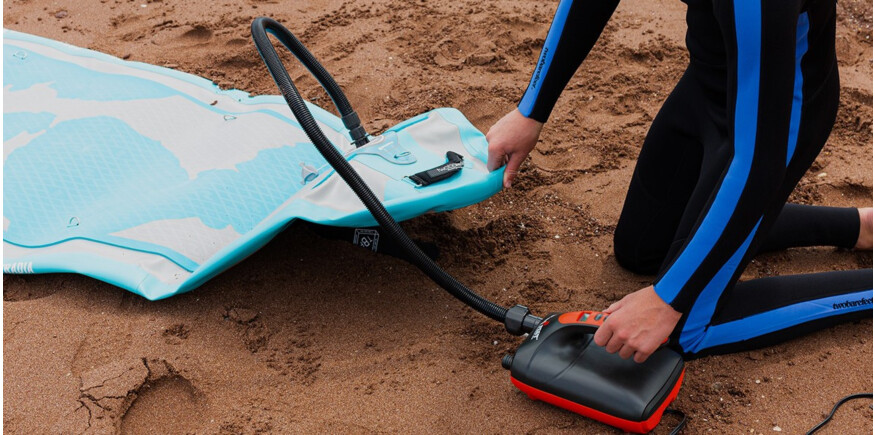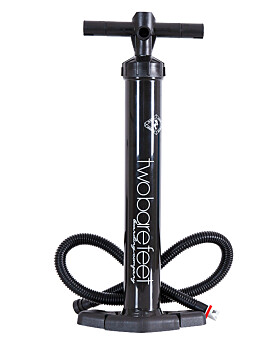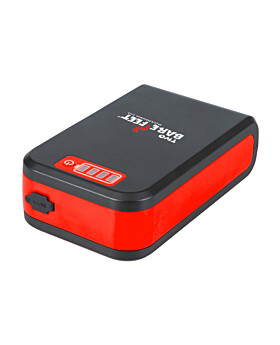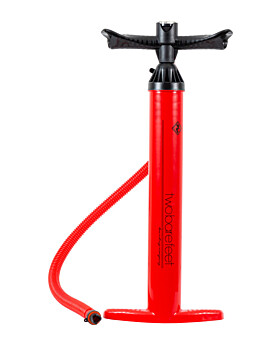Between pressure levels, valve types and electric or manual, different types of SUP pumps are useful in different situations.
Differences between SUP pumps
There are a few factors to consider when choosing the best SUP pump for an inflatable paddle board.
Valve compatibility
The nozzle needs to fit and stay securely connected to the valve on your iSUP. Many SUP pumps come with changeable nozzles to fit various valves.
The correct fit is necessary to ensure pressurised air doesn’t escape. If air can bleed out or is not entering the board’s air chamber efficiently, inflation will take longer or require more effort.
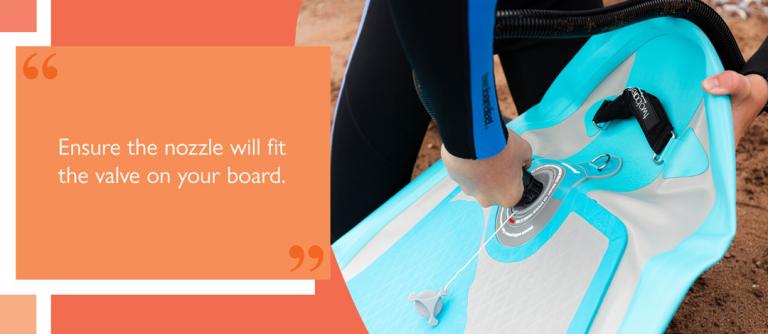

Inflation speed
The maximum volume and tensile strength of your board can be used to gauge the performance needed of a pump. Boards will inflate faster with a more powerful electric pump, or a manual one designed to deliver higher volumes of air efficiently, such as a dual-action pump.
SUP pumps can sometimes be used for deflation too, reducing time needed to prepare a paddle board for storage.
Protecting against overinflation
Overinflation can stretch and weaken inflatable paddle boards, or even cause a puncture.
Automatic shut-off valves on electric pumps avoid overinflation by stopping once a set air pressure is reached.
With manual pumps, the pressure gauge will help to track when the internal air pressure has reached the recommended psi rating. However, the amount of force needed to manually pump air into a board that is mostly inflated should make overinflation difficult to achieve by hand.
In addition, some SUP pumps can adjust airflow according to the air pressure at different stages of inflation.
Portability
With rechargeable and wireless SUP pumps, the user is not anchored to a power source. This means inflation and deflation can occur at the water’s edge.
Charge capacity and power availability can be a drawback in wireless SUP pumps. While some are able to fully inflate two or three paddle boards on one charge, others may be less capable.
Hose and wire length
For an electric SUP pump, the proximity of a power source to your launch point can make hose and wire length an important consideration.
A short power cable can be a frustration. Should you need to hold a paddle board in place while inflating, the time you could save prepping gear or suiting up is lost.
Similarly, a short hose can force a pump to be held at an awkward angle. Operating a manual SUP pump in an uncomfortable position will be inefficient, wasting energy before the session begins.
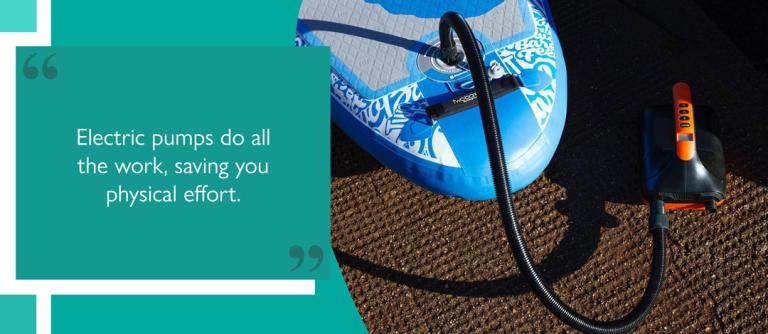

Noise level
Every electric pump will generate some noise due to the fans and moving mechanical parts.
Noise is an obvious concern for paddle boarders intending to camp around others or paddle in an environment where disturbances should be minimised (e.g. wildlife retreats). However, it may also be a consideration if you want to transport a board fully inflated and end up using a pump at home.
While quieter than electric pumps, manual SUP pumps are not wholly silent. The action of pumping pressurised air guarantees some level of sound.
Choosing between an electric pump and hand-powered SUP pump
Electric SUP pumps
Electric pumps do the work of inflating a paddleboard, saving you physical effort and maximising the time spent on your board. Depending on the model, power can be drawn from various sources, e.g.
- - a car battery or 12V socket
- - an external battery pack
- - a rechargeable battery.
Electric SUP pumps vary in power, which can affect inflation time. The amount of airflow, measured in litres per minute, can be used to estimate how long it will take to inflate a paddle board.
Hand-powered SUP pumps
Hand pumps are highly portable as they are both lightweight and wireless. Not requiring electricity, they can be used to inflate SUPs close to or even on the water. This can be helpful when needing to carry a board on SUP trips and multi-stage journeys.
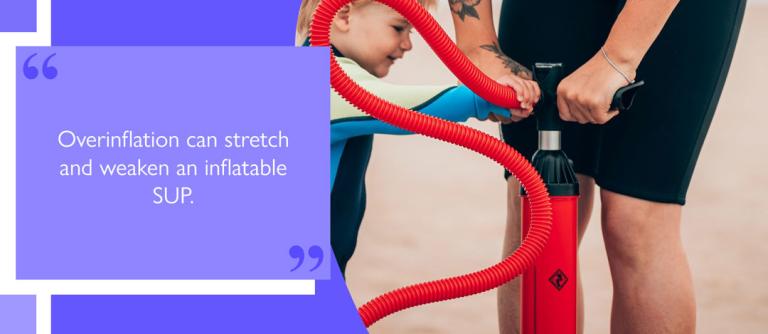

Single- and dual-action SUP pumps
Single-action pumps only inflate on the downward stroke, whereas dual-action pumps also inflate on the upward stroke. This allows for faster inflation and more efficient energy use.
The increased pressure on the upward motion can be tiring in the short-term, but energy is conserved overall as boards inflate faster.
Some SUP hand pumps switch between dual- and single-action to adjust to changing pressure. Single-action pumping is easier in the final stages of inflation.
Single-chamber and double-chamber pumps
Double chamber hand pumps have a higher capacity, facilitating more airflow with each pump.
Some manual pumps can be switched between using two air chambers or one, to suit each stage of inflation. The reduced power of a single chamber can make it easier to use once the air pressure in the board reaches the desired level.
Choosing the right SUP pumps and accessories
A quality SUP pump that suits your specific needs can help you get the best out of your iSUP and, crucially, your time on the water.
In addition to our range of SUP pumps, we also supply a broad selection of essential SUP accessories.

